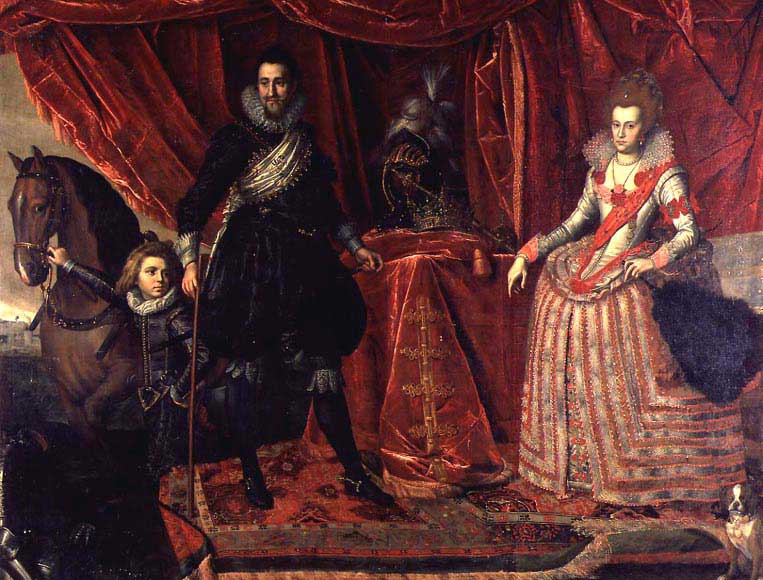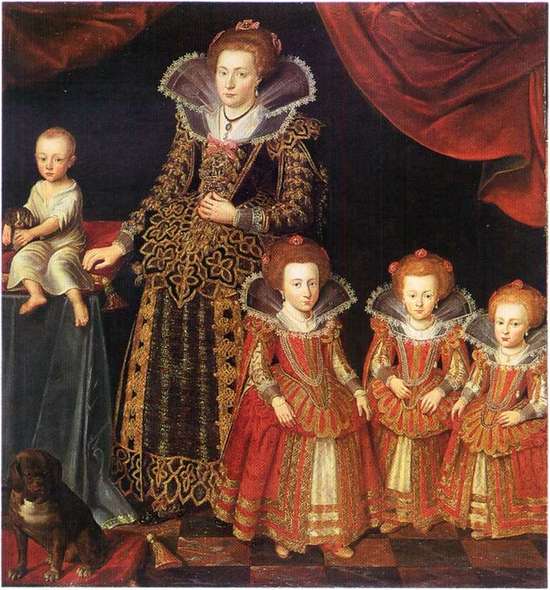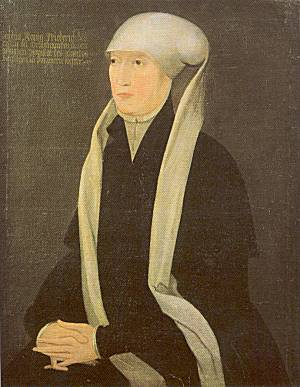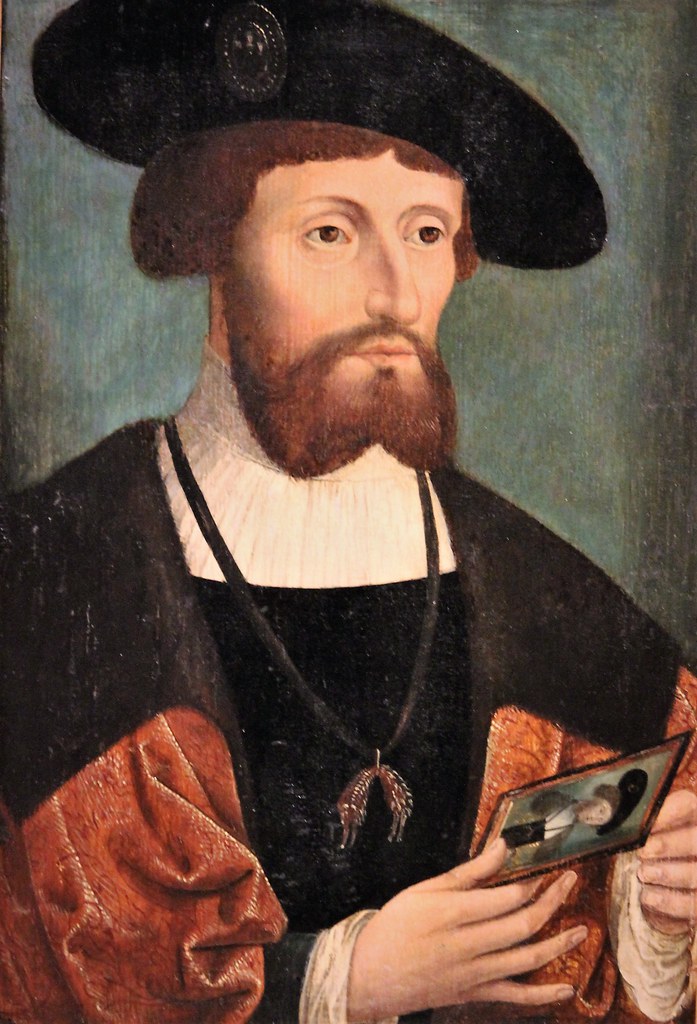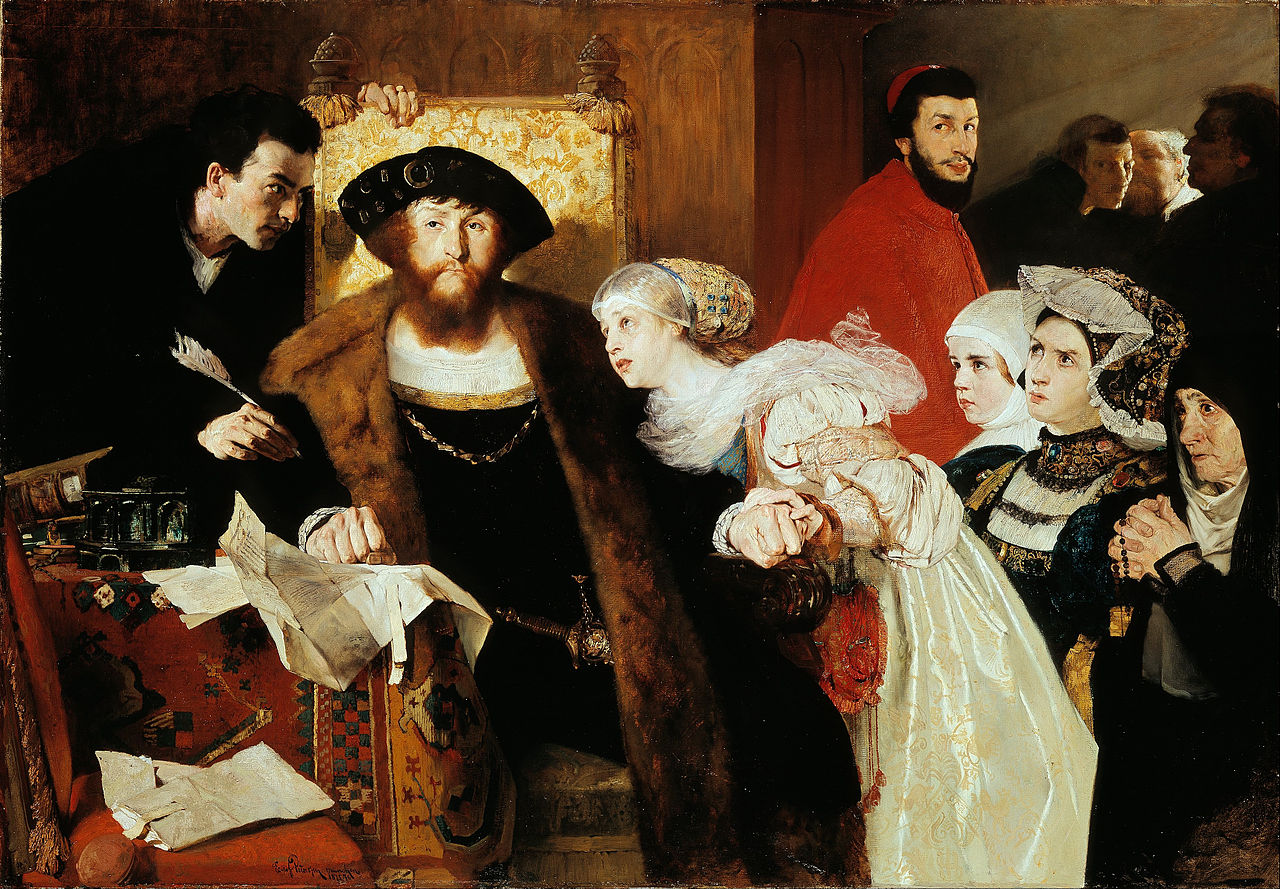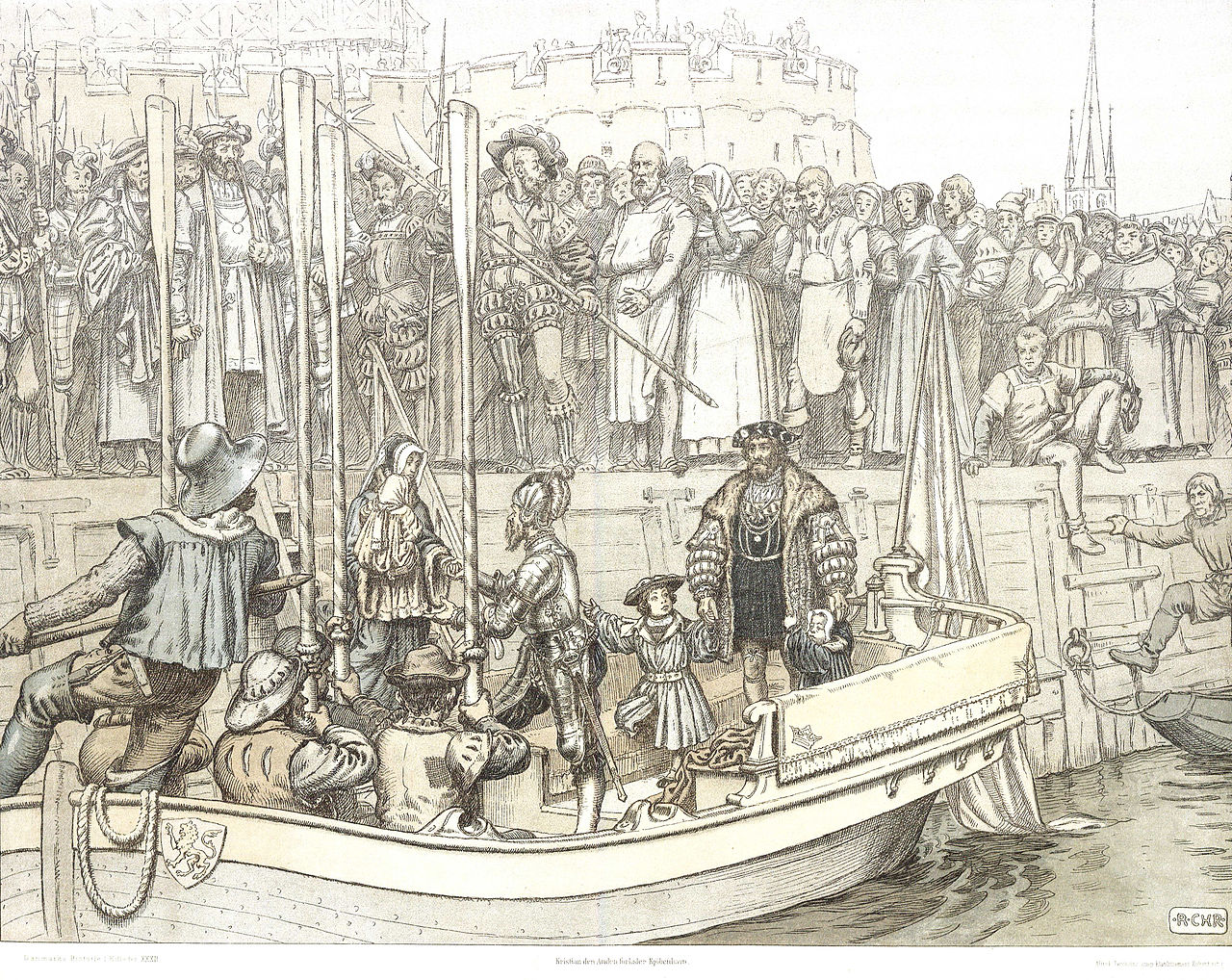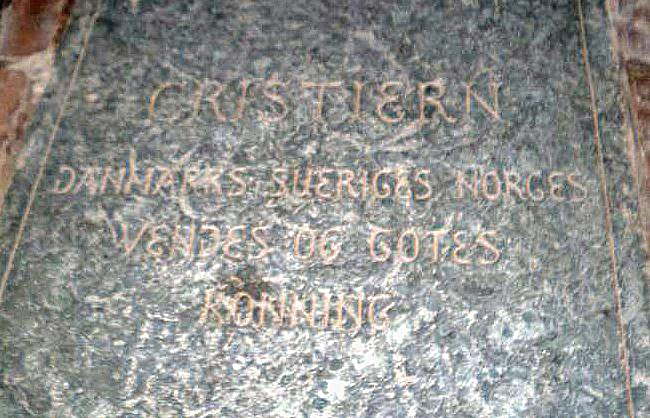by Susan Flantzer
© Unofficial Royalty 2021

Anna Katharina of Brandenburg; Credit – Wikipedia
The first wife of Christian IV, King of Denmark and Norway, Anna Katharina of Brandenburg was born on June 26, 1575, in Halle, Archbishopric of Magdeburg, now in the German state of Saxony-Anhalt. She was the second of the nine children and the eldest of the two daughters of Joachim Friedrich, Margrave of Brandenburg and his first wife, Katharina of Brandenburg-Küstrin.
Anna Katharina had eight siblings:
- Johann Sigismund, Elector of Brandenburg (1572 – 1619), married Duchess Anna of Prussia and Jülich-Cleves-Berg, had eight children
- Johann Georg, Duke of Jägerndorf (1577 – 1624), married Princess Eva Christine of Württemberg, had five children
- August Friedrich of Brandenburg (1580 – 1601), died as a teenager
- Albrecht Friedrich of Brandenburg (1582 – 1600), died as a teenager
- Joachim of Brandenburg (1583- 1600), died as a teenager
- Ernst of Brandenburg (1583–1613), unmarried
- Barbara Sophie of Brandenburg (1584 – 1636), married Johann Friedrich, Duke of Württemberg, had eight children
- Christian Wilhelm, Administrator of the Archbishopric of Magdeburg (1587 – 1665), married (1) Princess Dorothea of Brunswick-Wolfenbüttel, had one daughter (2) Countess Barbara Eusebia von Martinitz, no children (3) Countess Maximiliane von Salm-Neuburg, no children
Anna Katharina had one much younger half-sister from her father’s second marriage to Princess Eleonore of Prussia:
- Marie Eleonore of Brandenburg (1607 – 1675), married Count Palatine Ludwig Philipp von Simmern-Kaiserslautern, had seven children
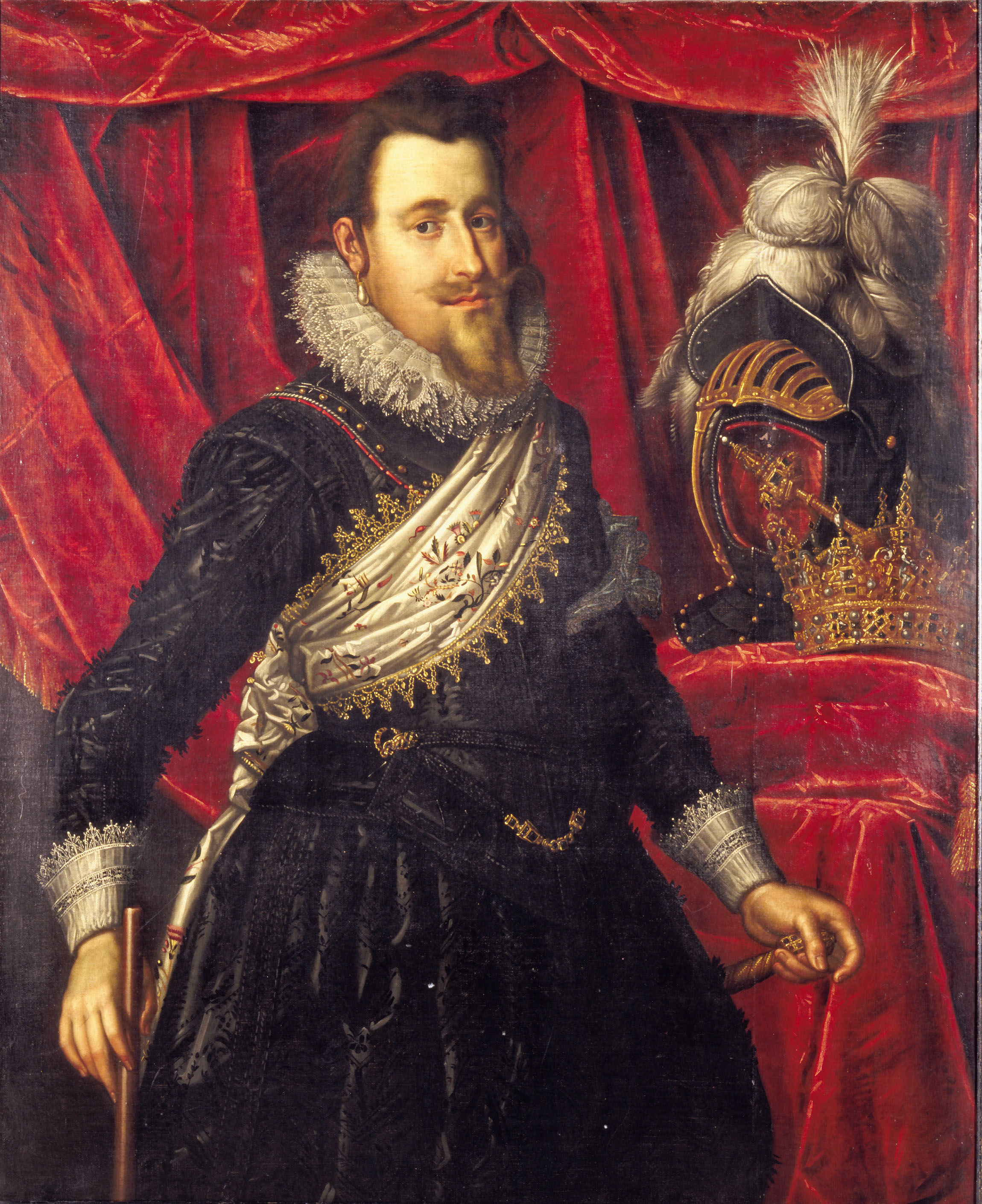
Christian IV, King of Denmark and Norway; Credit – Wikipedia
In the autumn of 1595, eighteen-year-old Christian IV, King of Denmark and Norway made a trip through some of the German monarchies. He met twenty-year-old Anna Katharina and decided to marry her. After a life-threatening crossing over the Baltic Sea to Denmark, Anna Katharina and her parents attended Christian’s coronation in Copenhagen in 1596. Christian and Anna Katharina met again in January 1597, and later that year, the marriage contract was signed. The wedding took place on November 27, 1597, at Haderslevhus Castle in Denmark. Anna Katharina was crowned Queen of Denmark on June 11, 1598, at the Church of Our Lady in Copenhagen, Denmark.

Anna Katharina with her son Christian, who predeceased his father; Credit – Wikipedia
Christian IV and Anna Katharina had six children:
- Prince Frederik (born and died 1599), died in infancy
- Christian, Prince-Elect of Denmark (1603-1647), married Magdalene Sibylle of Saxony, no children, predeceased his father
- Princess Sophie (born and died 1605), died in infancy
- Princess Elisabeth (1606-1608), died in childhood
- Frederik III, King of Denmark and Norway (1609-1670), married Sophie Amalie of Brunswick-Lüneburg, had eight children, including King Christian V of Denmark and Norway, Prince Jørgen (George), who married Queen Anne of Great Britain, and Princess Ulrika Eleonora, who married King Karl XI of Sweden
- Prince Ulrik, Prince-Bishopric of Schwerin (1611-1633), unmarried
Beate Huitfeldt, a Danish noble who served as maid of honor to Christian IV’s mother, was appointed as principal lady-in-waiting to Anna Katharina and remained in that position until Anna Katharina’s death. After Anna Katharina died in 1612, Beate Huitfeldt served as the royal governess of the household of Anna Katharina’s sons. Anna Katharina was praised for her modesty and piety. She often accompanied Christian IV on his trips but did not influence the politics of Denmark. Christian IV had affairs during his marriage, and Anna Katharina was certainly aware of them. Her maid of honor, Kirsten Madsdatter, gave birth to Christian’s son the day after Anna Katharina gave birth to her last child.
A little more than a year after the birth of her last child, Anna Katharina died on April 8, 1612, at the age of 36, and was buried at Roskilde Cathedral in Roskilde, Denmark. After the Christian IV Chapel at Roskilde Cathedral, was completed, Anna Katharina’s casket was moved to the chapel along with the caskets of her husband King Christian IV (died 1648, the silver-plated casket in the photo below), her eldest son Christian (died 1647) who predeceased his father, her second son who succeeded his father as King Frederik III (died 1670) and Frederik III’s wife Sophie Amalie of Brunswick-Lüneberg (died 1685).

Anna Katharina of Brandenburg’s sarcophagus in the foreground – Photo Credit © Susan Flantzer
This article is the intellectual property of Unofficial Royalty and is NOT TO BE COPIED, EDITED, OR POSTED IN ANY FORM ON ANOTHER WEBSITE under any circumstances. It is permissible to use a link that directs to Unofficial Royalty.
Kingdom of Denmark Resources at Unofficial Royalty
- Kingdom of Denmark Index
- Danish Orders and Honours
- Danish Royal Burial Sites: House of Oldenburg, 1448 – 1863
- Danish Royal Burial Sites: House of Schleswig-Holstein-Sonderburg-Glücksburg, 1863 – present
- Danish Royal Christenings
- Danish Royal Dates
- Danish Royal Residences
- Danish Royal Weddings
- Line of Succession to the Danish Throne
- Profiles of the Danish Royal Family
Works Cited
- Da.wikipedia.org. 2021. Anna Cathrine af Brandenburg. [online] Available at: <https://da.wikipedia.org/wiki/Anna_Cathrine_af_Brandenburg> [Accessed 26 February 2021].
- De.wikipedia.org. 2021. Anna Katharina von Brandenburg. [online] Available at: <https://de.wikipedia.org/wiki/Anna_Katharina_von_Brandenburg> [Accessed 26 February 2021].
- En.wikipedia.org. 2021. Anne Catherine of Brandenburg. [online] Available at: <https://en.wikipedia.org/wiki/Anne_Catherine_of_Brandenburg> [Accessed 26 February 2021].
- En.wikipedia.org. 2021. Joachim Frederick, Elector of Brandenburg. [online] Available at: <https://en.wikipedia.org/wiki/Joachim_Frederick,_Elector_of_Brandenburg> [Accessed 26 February 2021].
- Flantzer, Susan. 2021. Christian IV, King of Denmark and Norway. [online] Available at: <https://www.unofficialroyalty.com/christian-iv-king-of-denmark-and-norway/> [Accessed 26 February 2021].


